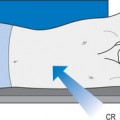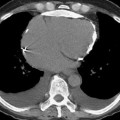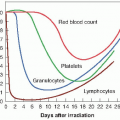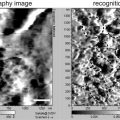Section 2 Index of radiographic examinations
Radiographic examinations
Abdomen
(see also Biliary tract; Diaphragm; Foreign bodies; Intravenous urography)
Basic projection
Additional projection
To demonstrate calcification of the aorta and blood vessels, an aortic aneurysm or abdominal masses.
Additional projection
To detect imperforate anus in infants.
Additional projection
To demonstrate any free fluid or air under the diaphragm which may indicate alimentary perforation, bowel obstruction or a subphrenic abscess in acute patients.
Alternative projection
Acromioclavicular joint
To demonstrate subluxation of the acromioclavicular joint.
Ankle
Arthrography
Arthrography can be described as the direct injection of contrast agent(s) into the capsule of a joint to demonstrate its internal soft tissue anatomy. Single or double contrast techniques can be used. Single contrast studies utilise a water-soluble iodinated contrast agent, the amount required varying with the joint under investigation. Air is the additional contrast used in double contrast studies. Most often used in investigations of the knee joint but shoulder, hip, elbow and temporomandibular joints may also be imaged using this technique. The procedure is performed under strict aseptic conditions. Following the aspiration of any joint effusion the contrast agent(s) are injected into the joint. The joint is then manipulated to distribute the contrast material evenly. A mixture of fluoroscopic spot images and conventional radiographs of the region under investigation are generally acquired.
NB: General anaesthesia may be required for investigation of the hip in children.
Atlanto-occipital articulation
This projection demonstrates the atlanto-occipital joints visualised through the maxillary sinuses.
Autotomography
This describes the use of patient movement, as opposed to IR and tube movement in normal tomography, to blur areas not required on the image. The most common use currently is for imaging the lateral thoracic vertebrae. The standard projection is used but the exposure is altered to include a long exposure time, e.g. 1 second. The patient continues shallow breathing during the exposure in order to blur the ribs and obtain better detail of the vertebrae and joint spaces.
Barium enema (double contrast)
Patient preparation
Prior to the examination rigorous patient preparation is essential to rid the entire large intestine of all faecal matter as this can mimic the appearance of pathology, e.g. small tumours. Patient preparation is department dependent but in general consists of the patient having a low-residue diet for 2–3 days prior to the examination with fluids only on the day before the examination. A laxative is taken the morning and evening of the day before the examination. If a bowel cleansing enema is required, it can be carried out on the day of the examination, making sure enough time is left before commencing the procedure to allow the colon to absorb the excess water this produces. Preparation is modified in patients with a predisposing condition which may be exacerbated by the usual departmental regime. In order to get the best diagnostic information from what can be a demanding examination, it is necessary to give the patient a full and comprehensive explanation of the procedure.
Technique
Basic projections
Spot films under fluoroscopic control with patient lying down
Patient aftercare
The patient should be monitored until any side effects produced by the muscle relaxant have subsided. The patient should be warned that their bowel motions will be white for a few days. As residual barium suspension can cause constipation, the patient should be advised to increase their water intake.
Barium meal and follow through
Technique
Basic projections
Spot films under fluoroscopic control with patient lying down
Barium studies
Once the exclusive domain of radiologists, barium examinations of the gastrointestinal tract are now increasingly the remit of radiographers who have completed the appropriate postgraduate courses of study. All measures should be taken to keep the radiation dose to both patient and practitioner to a minimum. See Section 3 for the contraindications to the use of barium sulphate as the contrast medium of choice. Muscle relaxants and gas-producing agents can also produce side effects and have contraindications that should be considered before they are administered.
Barium swallow
Patient preparation
Not necessary unless the stomach is to be examined when patient preparation is as for a barium meal.
Technique
Bicipital groove
Basic projection
Alternative projection
Inferosuperior (erect)
NB: The superoinferior projection is no longer recommended as the patient dose to radiosensitive tissues cannot be adequately controlled.
Biliary tract
Basic projection
Prone LAO
NB: As only a small percentage of gallstones are visualised on plain films, this projection is now mainly used as a control prior to contrast studies.
Additional imaging
To demonstrate gall bladder function (currently rarely used).
Oral cholecystography
Additional imaging
Operative cholangiogram
Additional imaging
To guide removal of calculi percutaneously where the T-tube is withdrawn before a catheter is passed along the remaining tract. The tip is placed just beyond the calculus allowing a basket to be inserted and opened beyond the calculus. This is slowly withdrawn and the stone grasped. This procedure is carried out under fluoroscopic control.
Percutaneous extraction of retained biliary calculi
Additional imaging
Imaging of the pancreatic and biliary ducts following the introduction of a contrast medium directly into the pancreatic duct. Indications for the procedure include jaundice and pancreatic disease. The patient requires sedation.
Additional imaging
To confirm or exclude extrahepatic bile duct obstruction in the jaundiced patient generally prior to intervention, e.g. drainage.
Additional modalities
Bitewing radiography
Basic projections
It is recommended that IR holders and a beam aiming device are used to aid accurate patient positioning and the correct alignment of the x-ray tube head. This will help to ensure optimum image quality and avoid the common fault of cone cutting. A bitewing acquired using the traditional detachable tab is operator dependent and not generally reproducible.
Molar region
Bone age
To establish the skeletal age of a child with retarded development of stature for chronological age, e.g. in Perthes’ disease. The PA projection of the left wrist is usually taken for comparison with images from the Greulich and Pyle1 Atlas or for use with the Tanner and Whitehouse2 scoring system.








